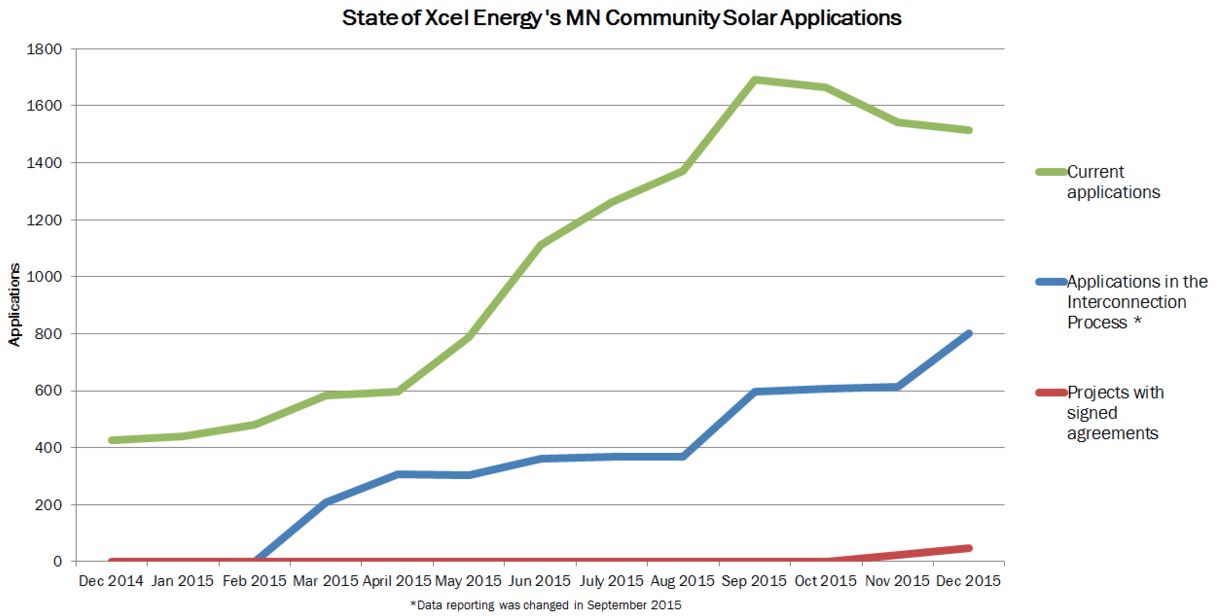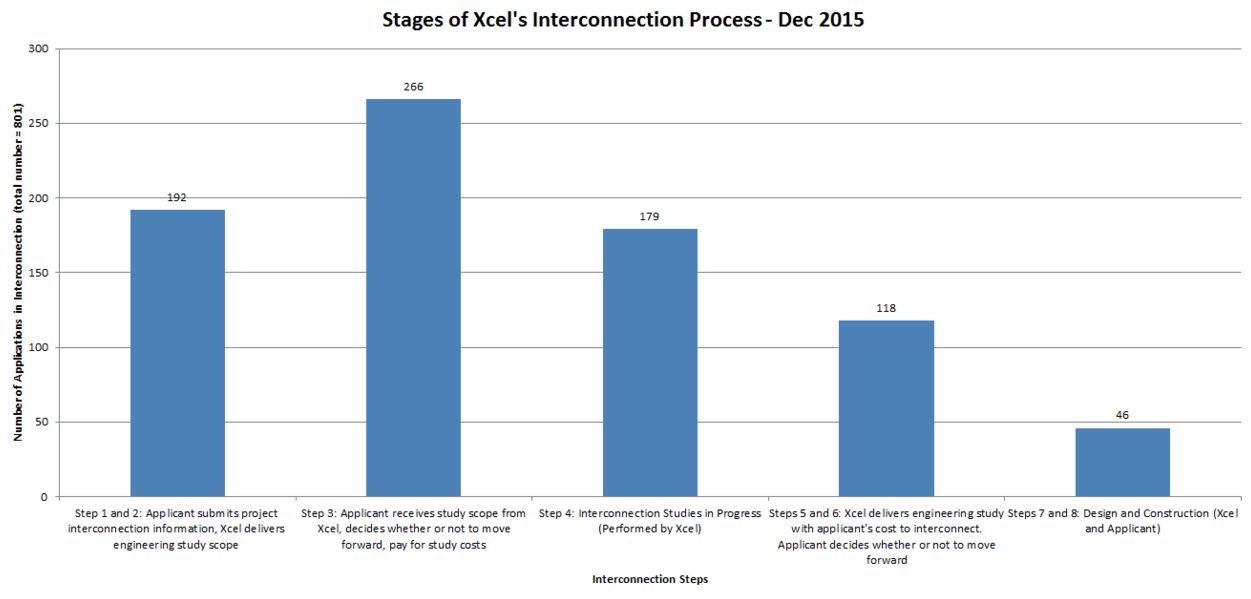It’s been one year since Xcel Energy launched its community solar program in Minnesota, receiving hundreds of proposals for solar gardens in the first week.
As the lead architect of the bill that created the program, we're excited about community solar because it allows individuals and organizations to benefit from its advantages, even if they don't have a solar-friendly roof.
As more customers learned about community solar, interest grew from individuals, nonprofits, colleges, public agencies, rural cities, businesses and churches.
However, the surge of applications created a bottleneck at Xcel, frustrating developers working on the projects and customers who were eager to utilize a solar option in their community. With more than 1,500 applications currently in the system, only one small 40-kilowatt community solar garden is in operation -- enough to supply electricity for about five to seven households.
After months of working at the Public Utilities Commission to get the program rules right, we’ve seen things improve slightly. There are now 46 applications (totaling roughly 43 megawatts) that have signed agreements with Xcel to begin construction. Another 800 applications at 175 project sites are currently somewhere in the process of being reviewed for interconnection to the electric grid.
However, this pace is still far behind the timelines in the state interconnection standard that governs Xcel’s processing of distribution generation requests.
Where do we go from here?
Work on those 800 or so applications is critical, because there isn’t much time remaining to get these projects completed.
According to a recent story in Midwest Energy News:
Xcel Energy believes their Minnesota community solar garden program will approve projects totaling “north of 250 megawatts” by the end of next year. “I view that [250 MW] as my floor,” [Lee Gabler, senior director of customer strategy and solutions] said.
We agree that anything less than 250 MW would be a huge missed opportunity. If gardens aren’t operating by the end of 2016, they won’t be eligible for the current 30 percent federal Investment Tax Credit -- drastically altering the financing of the project and the prices for customers.
The next step for community solar comes in April, when the Public Utilities Commission will invite public comments on proposed changes for future community solar garden project applications. Fresh Energy is working to ensure the new rules are effective and equitable. Below are some of the most important components of a successful program.
Increase access to low- and moderate-income customers
Unfortunately, with the retroactive changes to Xcel’s community solar program, the decrease in the number of available projects and the delay may result in less capacity available for low- to moderate-income customers.
Through Fresh Energy’s work with affordable housing providers and other community groups, we know that there is unmet demand for solar in low-income communities and residents. Building from our research, Fresh Energy is convening stakeholders to develop concrete recommendations on increasing access to community solar for the Public Utilities Commission to consider in 2016.
Transition to the sustainable value-of-solar rate
In 2014, the Public Utilities Commission approved Minnesota’s landmark value-of-solar methodology. The methodology, an outcome of 2013 legislation, fairly quantifies the value that distributed solar energy systems, like community solar gardens, provide to all utility customers. Unlike the current rates that fluctuate annually, the value-of-solar rate locks in the rates solar garden customers can receive, providing stability to customer bills and to the program as a whole.
Xcel Energy, the commission, and Minnesota stakeholders have two years of experience with Xcel’s value-of-solar calculations. Will the commission decide that the rate is ready for use in 2016?
Get the grid rules right
Customers and solar developers alike agree that Minnesota’s 11-year-old distributed generation interconnection standards are outdated. Inadequate interconnection standards increase transaction costs and waste resources for solar projects that stall out when interconnection approval is required.
For example, when Xcel’s community solar program opened, interconnection information that would streamline the process by guiding developers in siting and sizing projects was unavailable. The next set of solar gardens and other distributed generation will require a modern interconnection system, which exists or is being pursued in a number of other Midwest states.
Consistent and clear rules for customers and businesses
Uncertainty surrounding the program in 2015 and the retroactive changes made to the program caused significant delays to projects. With the federal Investment Tax Credit set to decline at the end of 2016, these delays may mean that some projects get abandoned.
A healthy solar industry needs consistent rules that will lead to sustainable development in 2017 and beyond.
Making solar work for all Minnesotans
Xcel’s customers have waited over two and a half years since the original legislation passed to access community solar. Over the past year, Xcel, solar businesses, and stakeholders like Fresh Energy have learned from the program’s delays. A key priority for the next year needs to be incorporating these lessons into the program rules moving forward in order to avoid further delays and create solar options for all.
***
Allen Gleckner is a senior policy associate at Fresh Energy. This piece was originally published by Fresh Energy and is reprinted with permission.





